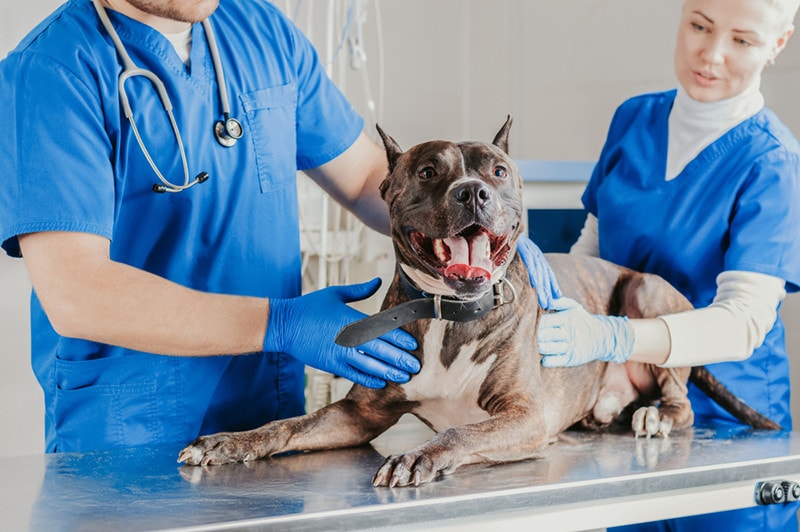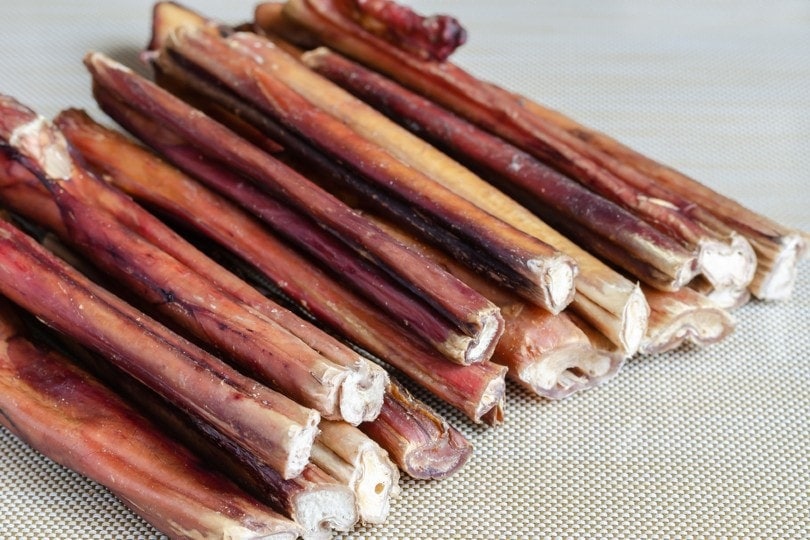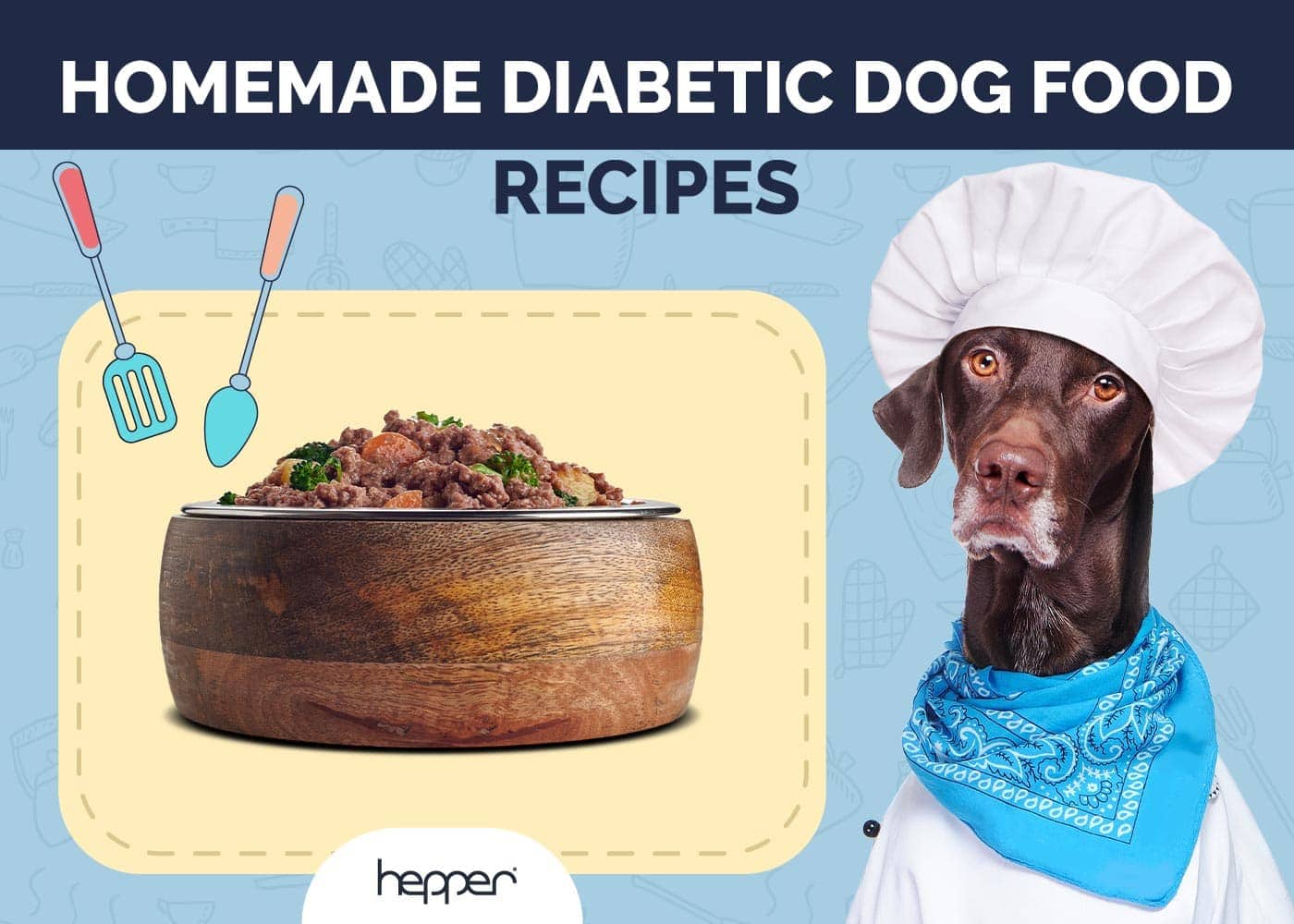My Dog Ate Poison Ivy: Here’s What to Do (Vet Answer)

Updated on
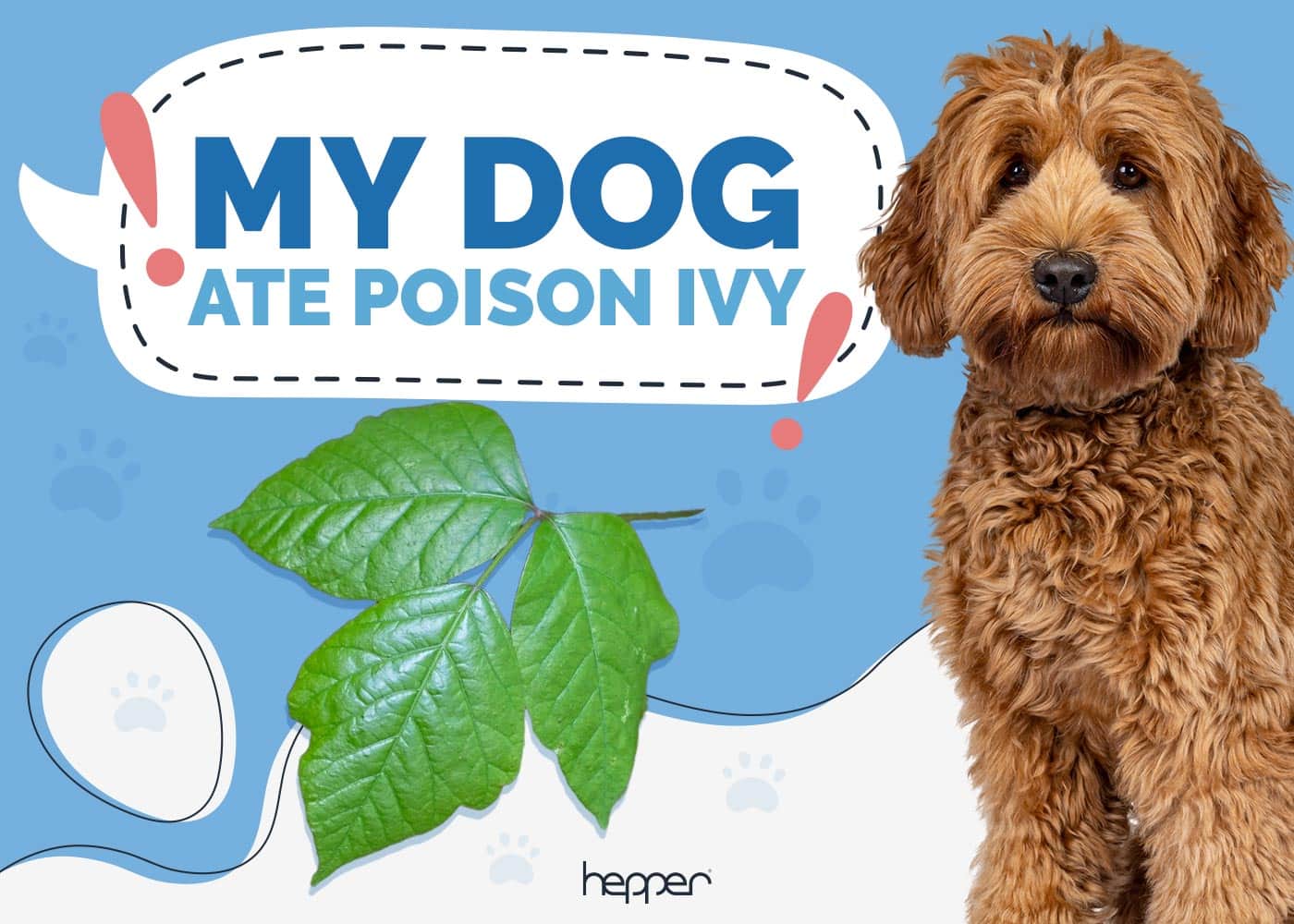
There are several different plants around our homes or in areas where we take our dogs that can be toxic or poisonous to our pets. One of those is poison ivy.
Does poison ivy live up to its name? Yes, poison ivy can cause some problems in our pups, though not as commonly as it does us. Poison ivy can cause gastrointestinal irritation, diarrhea, and vomiting if eaten, and the sap can cause a nasty rash when it touches your dog’s skin. If your dog comes into contact with or eats poison ivy, speak to your vet as soon as you can.
What Is Poison Ivy?
Poison ivy (Toxicodendron radicans) is common in many parts of the United States.
Each stem has three leaves which turn from green in the spring to yellow and red in the fall. The plant can produce grayish flowers then berries. The plant can grow low on the ground similar to a bush or it can be vine-like and grow around other plants and trees. Dogs often come across this plant when walking in wooded areas or green spaces.
The leaves, stems and the roots all contain an oil called urushiol. This oil reacts with the skin and the inside of the mouth and gastrointestinal tract creating irritation, swelling, itchiness, and even blisters. If ingested, it may cause vomiting, diarrhea, and stomach pain.
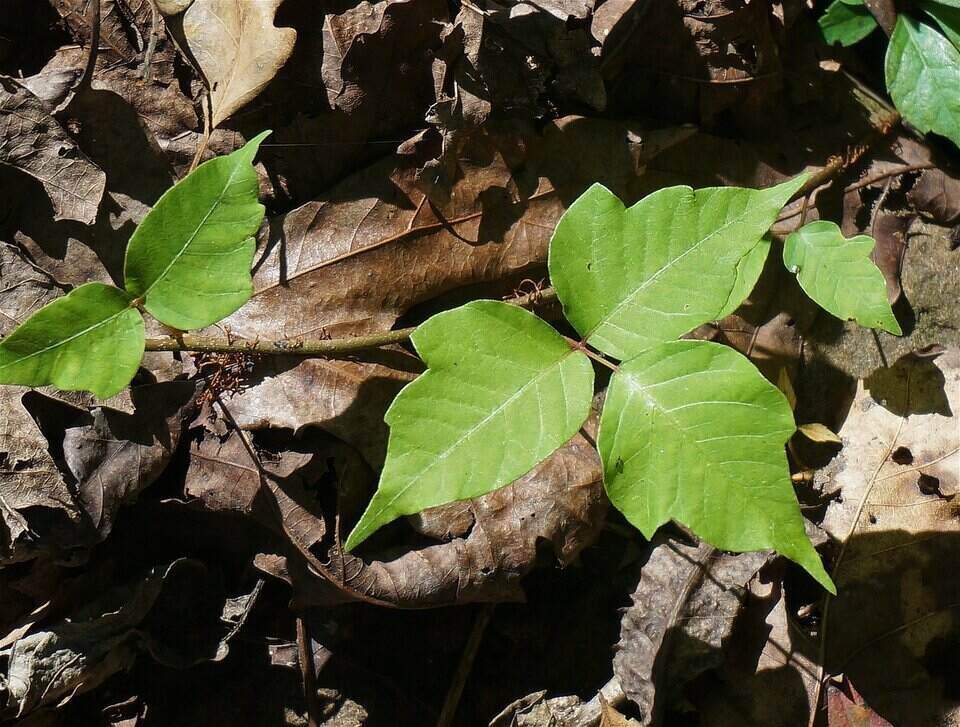
Is Poison Ivy Dangerous for Dogs?
While the name may be ominous, poison ivy tends to only be mildly toxic to dogs making poison ivy toxicity very rare for our pets.
In normal circumstances, dogs are protected from the ill effects of poison ivy due to their hair coat. The oils from the poison ivy can’t usually penetrate the hair so they have a hard time reaching the skin. They can however sit on the fur and be transferred onto human skin when we pet our dogs. Occasionally, dogs may experience a rash if the oils get directly on their skin most commonly in the lighter haired portions of their body like the groin, belly, or face. Dogs may show up with redness, bumps or blisters and itching. Where poison ivy becomes more of a concern for dogs is if they happen to ingest it.
My Dog Ate Poison Ivy, What Do I Do Now?
Follow this step-by-step guide if you have found your dog has eaten poison ivy.
1. Stop Your Dog from Eating Any More Poison Ivy
If your dog is in close proximity to any poison ivy, move them away to prevent them from eating any more. If you can see any parts of the plant in their mouth, and you have some gloves on hand, try and remove them from your dog’s mouth. Don’t try to remove them without gloves as the oils can have a toxic effect on your skin and cause a rash.
2. Call Your Vet
Keep your dog with you and get on the phone with your vet. Poison ivy toxicity is usually mild but depending on the health status of your dog it can cause serious problems. Your vet will need to go through some questions on the phone, so be prepared to answer them. Likely questions will include:
- Has your dog actually eaten poison ivy or just been in contact with the plant?
- When did your dog come into contact with or ingest the poison ivy?
- How much does your dog weigh?
- Does your dog have any underlying health problems?
- Is your dog on any medication for anything currently?
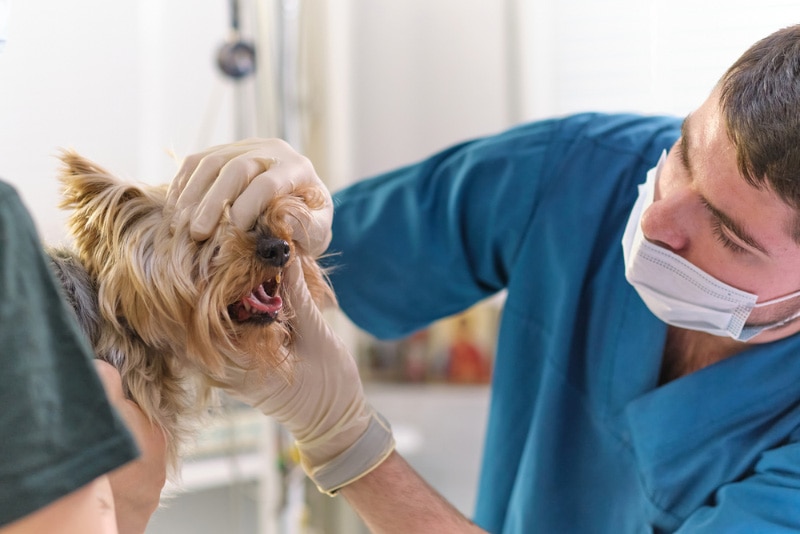
3. Follow Your Vet’s Instructions
Your vet is likely to advise you to bring your dog down to the hospital. If this is the case, safely bring them down as soon as possible. If you can, take a photo of the plant so that your vet can confirm the identification.
4. Keep a Close Eye on Your Dog
Poison ivy can cause irritation of the digestive system similar to how it irritates the skin. This can be very distressing and painful, so make sure your dog doesn’t run off or try to eat something else to soothe the discomfort.
5. Don’t Try and Treat Your Dog at Home
Trying to treat your dog at home will delay them receiving professional help from your vet. It is not recommended to try and make your dog vomit at home. The poison ivy is likely to cause irritation on the way back up. If there is a reaction on your dog’s skin, home remedies applied to the skin may make the lesions worse.
The urushiol released from poison ivy can have an effect on humans as well as dogs. If you come into contact with the oil, it can cause a contact dermatitis reaction which can result in blisters and an itchy rash. It can be especially traumatic for young children, so it is best to leave it to the professionals. Always wear gloves when handling the plant or touching your dog that has had contact with it and wash your hands afterward.
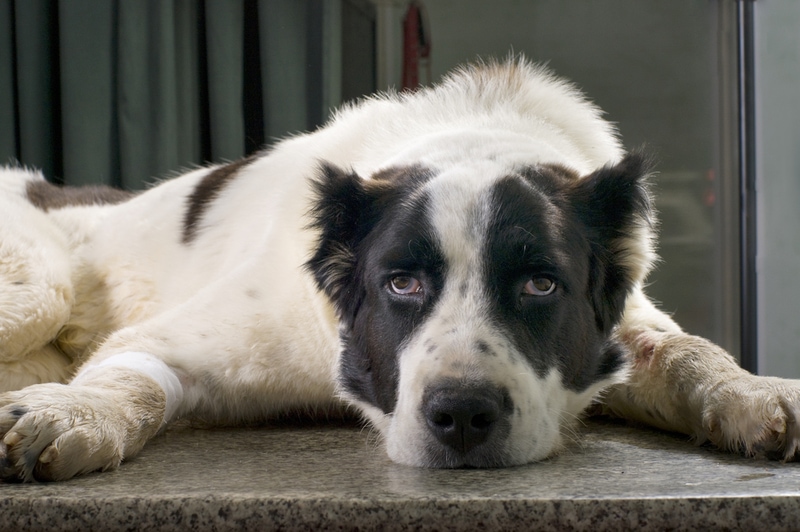
Clinical Signs Your Dog Has Eaten Poison Ivy
Poison ivy is usually only mildly toxic to dogs. This applies to both exposure to the skin and the oral route of ingestion. Therefore, in some dogs, clinical signs may only be mild.
- Redness
- Swelling
- Blisters
- Itching
- Rash
- Pain
- Retching
- Vomiting
- Diarrhea
- Drooling
- Abdominal pain
- Stretching out their body to ease the discomfort
- Loss of appetite
- Bloating
The severity of the symptoms will depend on the general health of your dog and their size as well as the amount they have ingested. A smaller dog that has eaten a large amount will have more severe clinical signs than a large dog that has ingested a few leaves.

What Will Your Vet Do?
Your vet will want to give your dog a full examination. They will check if there are any skin rashes that require attention. They will also assess the inside of your dog’s mouth and feel their stomach.
Your vet may try to rinse out your dog’s mouth using water to decontaminate the area. Any skin that has come into contact with the sap will be cleansed as well to remove as much of the irritating compound as possible.
Your vet may take a blood sample and check your dog’s urine to see if they are showing signs of systemic illness. Depending on the severity of the toxicity, your dog may require supportive treatment such as intravenous fluid therapy, pain relief, and anti-inflammatory or antihistamine medication. Vomiting and diarrhea alone can cause severe dehydration so this will be assessed and addressed by your vet as well.
Your vet will decide if your dog needs to be hospitalized for monitoring and further treatment.
Luckily, most dogs recover quickly and are completely back to normal within a few days.
If your dog has any underlying health problems, such as gastrointestinal issues or a compromised immune system, they may take longer to recover or need further support from your vet. If there are no obvious clinical signs and your dog seems stable, your vet may recommend you take them home for monitoring.
How To Prevent Your Dog from Eating Poison Ivy
The simplest way to prevent your dog from having any contact with poison ivy is to keep the plants out of your yard and to keep your dog on a leash when walking in wooded areas. Supervision is necessary when your dog is off leash to make sure they don’t come in contact or eat any suspicious plants.
Conclusion
Poison Ivy can be toxic to dogs if it comes into contact with their skin or if it is ingested. All parts of the plant are toxic. Poison ivy can cause an itchy, blistery skin rash in the lighter haired portions of your dog’s body or it can cause irritation to the digestive system, including the mouth, if eaten.
The treatment will depend on how much of the plant was ingested and how severe the clinical signs are. The sooner veterinary attention is received, the better the prognosis is. Usually, dogs make a full recovery.
Featured Image Credit: damann, Shutterstock




